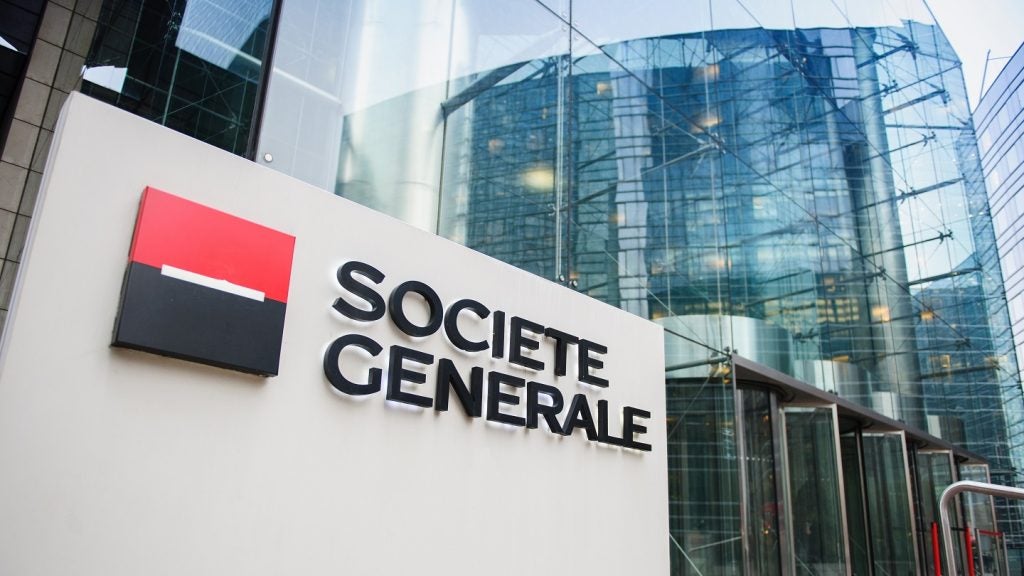Cautious confidence has
returned to the leasing industry, says Richard Ryan, author of the
Invigors Business Confidence Survey, supported by
Leasing Life and Leaseurope.

In December, Invigors, supported by
Leasing Life and Leaseurope, undertook the fifth in its
series of pan-European asset finance business confidence surveys,
aimed at monitoring how business confidence in the industry has
changed since the initial research was carried out in 2008. The
results set an optimistic tone for this year.
The initial surveys followed the
industry into the trough of recession and charted its impact on key
business metrics such as new business volumes, margins and bad
debt.
The more recent surveys identified
an increasingly positive perception among those contributing to the
research, and the December study suggests that the business upturn
is becoming more firmly established.
The latest survey covered views
from sixteen countries across Europe, representing the opinions of
a cross-section of banks and bank-owned lessors, independent
finance companies, intermediaries and captives.
How well do you really know your competitors?
Access the most comprehensive Company Profiles on the market, powered by GlobalData. Save hours of research. Gain competitive edge.

Thank you!
Your download email will arrive shortly
Not ready to buy yet? Download a free sample
We are confident about the unique quality of our Company Profiles. However, we want you to make the most beneficial decision for your business, so we offer a free sample that you can download by submitting the below form
By GlobalDataCapital constraints relax
 The
The
improvement in new business volumes looks set to continue in the
first half of 2011. A total of 86% of respondents expect new
business volumes to increase over the next six months, compared to
74% in June of last year, and 65% in the November 2009 survey. Only
5% anticipate a decline, and the balance expect no change.
Growth rates appear to be robust:
the majority of those responding to the survey expect growth in new
business volumes of 5-20% in the next six months.
Capital availability appears to be
less of a constraint and is supporting the growth in new business
volumes. In the latest survey, 38% of participants expected that
the availability of capital would increase in their business, which
was a similar proportion to those in the June 2010 research.
However, this represents a considerable increase on the 11%
registered in the initial survey back in September 2008. Most
respondents expected the increase to be modest though, at no more
than 10%.
Just under half of the December
respondents anticipated no change in capital availability, a
percentage which has remained steady throughout all the confidence
surveys. Only 13% thought capital availability would decrease, a
notable reduction from the 36% expressing the same opinion back in
September 2008.
Margins will weaken, but
profits grow
The focus on reducing bad debt is
being maintained. The proportion of respondents anticipating bad
debt to decline further over the next six months was 41%, roughly
the same as the June survey. This%age has grown from zero in April
2009 to more than 40% last June.
By contrast, the proportion of
respondents anticipating bad debt to deteriorate has shrunk from
50% in April 2009 to 18% in December last year. Of those expecting
bad debt to decrease, most were evenly split between a reduction of
less than 25 basis points (bps) and the remainder, which expected a
reduction of between 25 and 100bps.
However, it appears that
competition for new business is bringing margins increasingly under
pressure. A total of 35% of respondents expect margins to decrease
over the next six months compared to 24% last June and 15% in
November 2009. The majority of those anticipating lower margins
thought that the decline would be no more than 15 bps, though a few
expected a greater fall.
Only 23% of those surveyed forecast
an increase in margins, this proportion having fallen from 55% of
the survey respondents in April 2009. The proportion of
participants expecting no change in margins has fallen from a high
of 58% in the November 2009 survey to 42% in December of 2010.
Despite the pressure on margins, it
appears that the combination of new business growth and improved
management of bad debt is generating increased profits. Of those
taking part in the December survey, 80% expect profits to increase
over the next six months compared to 70% in June 2010 and a low of
40% in April 2009.
More than half believe profits will
increase slightly, while 27% expect a significant increase. The
proportion of respondents who expect profits to decrease over the
next six months has fallen from 32% in April 2009 to 6% in the
latest survey.
Fewer
competitors
The survey asked respondents to
comment on the likelihood of new entrants appearing over the next
six months and the future trend in merger and acquisition activity
in their home market. The majority, 72%, thought it unlikely that
new competitors would emerge, an increase from 59% in June 2010.
The remaining 28% considered it likely, down from 41% in the
previous survey.
Perceptions of merger and
acquisition activity were little changed over the year. The
majority of those surveyed, 52%, thought there would be no change
in merger and acquisition activity, a very similar proportion to
that in the June 2010 research. Another 41% thought that merger and
acquisition activity would increase, again similar to June, while
just 6% forecast a decrease.
As the European asset finance
market recovers from recession, it seems that consolidation among
incumbent lessors has been the predominant trend rather than a
diversification of competition.

Upbeat on conversion
rates
For most survey participants, the
conversion rate of sales leads continues to consolidate. More than
half the respondents in December thought sales leads conversion
rates would improve over the next six months, which was the
same%age as the June 2010 survey but above the 29% recorded in
April 2009.
The majority of respondents
expected the increase in conversion rates to be modest, at less
than 10%.
A total of 38% of respondents
expected no change to conversion rates, while 9% believed that
conversion rates would fall, compared to 21% in June 2010. The
general improvement in sales leads conversion could be down to a
number of factors, including better or more focused targeting of
new business, competitive pricing, or less competition.
No change to turnaround
times
While the majority of participants
in the December survey, 58%, expect no change in credit turnaround
times, a growing minority expects the decision-making process to
speed up over the next six months.
A total of 31% anticipated credit
turnaround times to shorten, up from 10% in June 2010 and 6% in
April 2009.
Mirroring this trend, the%age of
respondents expecting credit turnaround times to lengthen has
fallen, from a high of 49% in April 2009 to 11% in the December
survey.
Acceptance levels are showing a
similarly positive trend. Again, most respondents, 69%, expect no
change in acceptance levels over the next six months though 28%
believe that they will increase. While the 28% remains the same as
in the June 2010 survey, it is nonetheless significantly higher
than the 4% registered in the first survey in September 2008.
By contrast, the proportion of
respondents expecting acceptance rates to decrease has fallen
dramatically from 62% in September 2008, to 3% in the most recent
survey.
Credit policies
constant
Increases in sales lead conversion
and acceptance rates could be attributable to looser credit
policies, though there is little evidence of that from the
research. Only 13% of those taking part in the December survey
thought the underwriting criteria in their business would loosen
over the next six months, while 69% believed there would be no
change. A total of 18% expected that their underwriting criteria
would tighten.

Direct and vendor finance
favoured
The survey asked respondents how
they expected business to change through three channels – direct,
vendor finance and brokers. Direct sales appears to be the most
favoured: 79% thought direct business would increase over the next
six months compared to 7% who expected it to decrease.
Of those businesses focused on
vendor finance, 74% of respondents believed business would
increase, up from 63% in June last year and 55% in April 2009. By
contrast, 6% believed vendor finance business would decline, a
proportion which has been constant since November 2009. This
reflects the emphasis that a number of vendors have placed on
vendor finance business at the expense of other channels.
For the respondents operating in or
through the broker market, the message was positive but less
unanimous compared to the other two channels. Half the respondents
believe broker business will increase over the next six months
against 20% anticipating a decline. No change was expected by 30%.
Sentiment towards the broker channel has improved significantly
since the initial survey in April 2009 when only 23% thought that
business would increase against 49% who expected a decline.
Mixed picture on
costs
Leasing companies are taking a
cautious view on expenditure despite the improvement in business.
Operating expenses are increasing in some of the organisations
surveyed, 28% of respondents expected these to increase over the
next six months compared to 11% in the June survey.
However, 47% of participants in
December believed that operating expenses will stay level, a
proportion which has been static since 2008. The proportion of
those expecting operating expenses to decrease has fallen to 25%,
down from 39% in June 2010.
Expenditure on marketing appears to
remain under tight control. Of those surveyed in December, 57%
anticipated that marketing spend in their organisations would
remain unchanged over the next six months, a significant increase
on the 39-41% registered in previous surveys. By contrast, the%age
of those expecting marketing expenditure to increase has fallen
from 36% in June to 25% in the latest survey.
There is a clearer trend among
respondents expecting marketing expenditure to decrease: this has
reduced to 18% in December 2010, down from 47% in April 2009.
Marketing budgets appear to be flat.
For training, the outlook is
somewhat more optimistic, with 37% of respondents expecting
expenditure to increase. This is up from 25% in June of last year
and 19% in November 2009. Of those surveyed, 48% expect no change
in training spend, which, although a reduction on the June
2010%age, is similar to that recorded in November 2009. Just 15% of
the December participants expect training expenditure to decline, a
similar proportion to the June figure but well below the number
recorded in previous surveys.
IT boom ahead
The biggest shift in expectations,
however, has occurred on systems expenditure. No less than 65% of
respondents anticipate spend on IT systems will increase over the
next six months, compared to just 36% in June 2010, and 24% in
April 2009 when the question was first asked. Most of the
remainder, 32%, expect no change, which is a significant reduction
from 50% registered in the previous survey.
The%age of respondents anticipating
a decrease in systems expenditure has fallen from 38% in April
2009, to
3% in December 2010.
This is the largest change in
expenditure expectations since the business confidence survey was
started and, if realised, could indicate a boom for IT suppliers in
the year ahead.
Hiring again
In terms of staffing levels,
investment in sales forces continues. Half of those surveyed in
December believe that sales staffing levels will increase in the
next six months, up slightly from 46% in June 2010 and double
the%age recorded in April 2009. Most of the remainder, 47%, expect
no change. The%age of respondents anticipating a decrease in sales
staff has fallen steadily from a high of 32% in April 2009 to just
3% in December 2010.
Numbers of non-sales staff also
look set to increase, though the growth here is not as widespread
as for sales staff. Of participants in the latest survey, 31%
expect non-sales staff headcount to increase, up from 25% in June
2010 and 16% in April 2009. The largest proportion of those
surveyed, 47%, anticipate no change in headcount numbers while the
balance who believe non-sales numbers will decline has fallen from
35% in April 2009 to 22% in December 2010.
Glass half
full
Given a more positive business
environment, it was not surprising that 80% of those surveyed were
more optimistic about the prospects for their business in 2011, a
significant increase from 56% holding the same view last June and
37% in September 2008.
The remaining 20% expect prospects
for business to remain the same, while none at all feel
pessimistic. If this optimism is realised then 2011 will be the
year in which the European asset finance industry turns the corner
of recovery.
Richard Ryan is a partner at
Invigors







